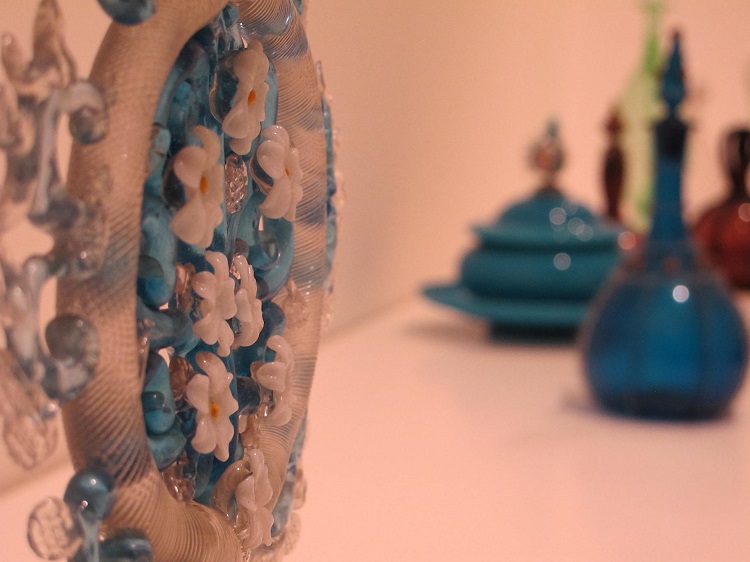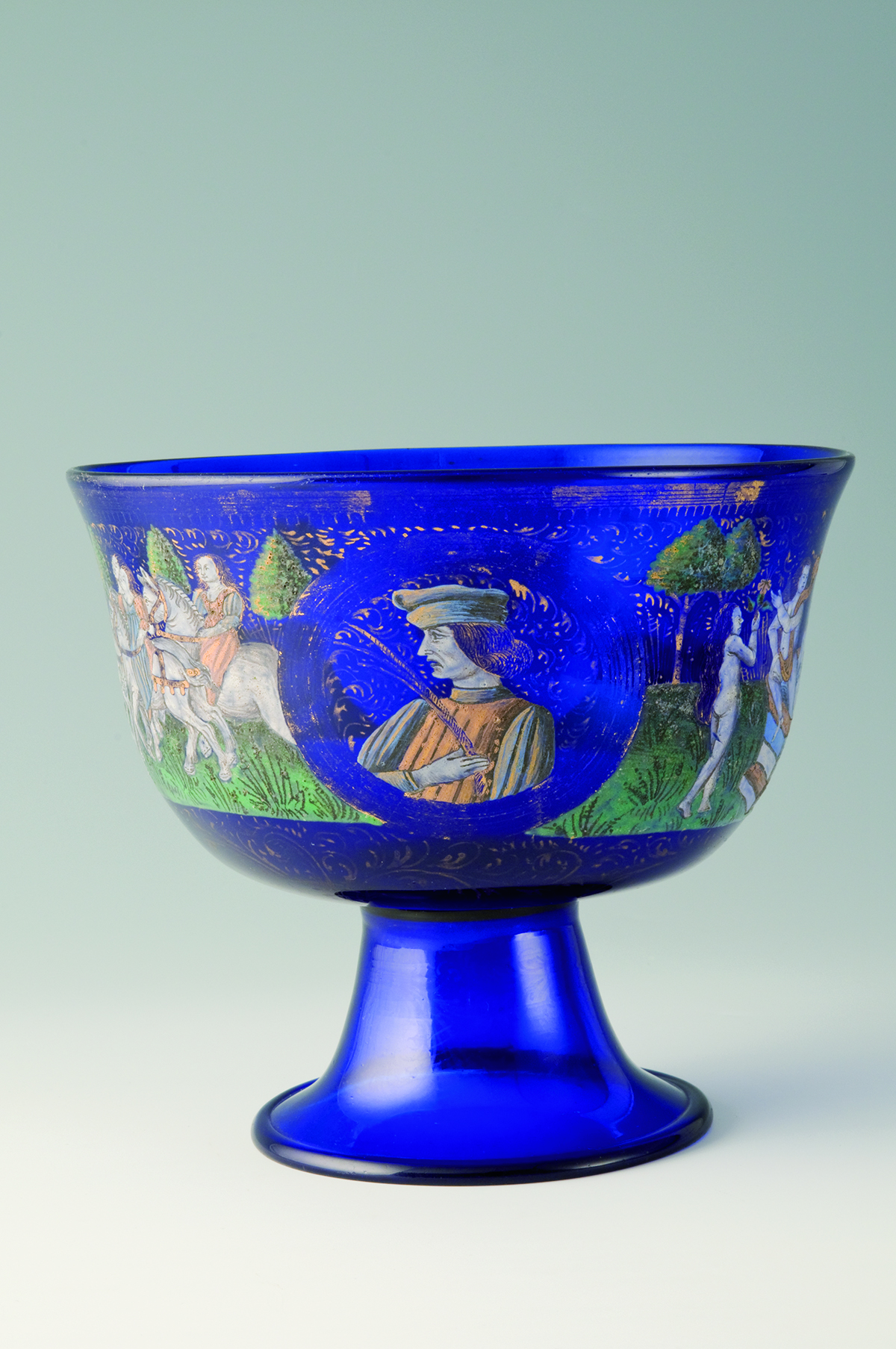
Museo del Vetro a Murano
Venice is visited every year by tourists interested not only in its unique layout – more than a hundred islands connected by canals and bridges – but also in its artistic tradition, with its many architectural examples of floral Gothic and Byzantine-inspired art. Those who come to Venice, however, often do not want to miss out on the peculiarities of local handicrafts either, especially the glass and lace-making that have made the neighbouring islands, Murano and Burano, famous.
Visit to the Murano Glass Museum

Murano is a group of seven islands to the north-east of Venice, connected, like the city of which they are part, by small canals and bridges, and is still known for its centuries-old glassmaking activity. Tickets to the Murano Glass Museum allow visitors to retrace the history of this craft tradition. The museum, located inside Palazzo Giustinian, one of the many examples of Venetian flamboyant Gothic, is open Thursday to Sunday from 10am to 6pm and is also accessible to wheelchairs; the ticket does not include an audio guide, nor entrance to temporary exhibitions, both of which can be purchased on site. The option with cancellation by 23:59 on the day before the visit can be chosen, however this cannot be rescheduled.
WHAT TO SEE AT THE MURANO GLASS MUSEUM?
There are artefacts arranged in chronological order: the oldest exhibits are from the Roman era (1st-4th centuries AD) and the works on display reach up to the present day, testifying to the evolution and expertise of glass artisans.
A visit to the Murano Glass Museum will also reveal when the art of glassmaking began to flourish in the lagoon and why it was concentrated in Murano, making its islands so characteristic.
Around the end of the 13th century, in fact, it was decided to move all Venetian glassworks, which had already developed and established themselves in this delicate craft speciality, here. The reason? The furnaces that allowed for the manufacture of glass were dangerous because of the frequent fires that, due to the often wooden buildings, could trigger.
Given the large number of tourists who come to these islands every year to see live glassmaking and the artefacts of Venetian craftsmen, on Fridays and Saturdays until 30 September 2023 and on 14 and 15 August the museum will remain open until 8pm.
Murano and the Glass Museum can be reached by the city’s typical public transport, boats and waterbuses, and for some tickets you can select the option that includes them in the ticket price.
How to watch Murano glass being made?
If you are more interested in the history of the Venetian and Murano glassmaking tradition than in the techniques used, there are various ways to see the craftsmen at work or to transform a shapeless, glowing mass of glass into a small artefact yourself.
It is also possible to watch glass being made without moving from Venice: there is a Murano glass factory near St Mark’s Square that organises demonstrations. After meeting near St. Mark’s Square, the guide, easily identified by the ‘Glass Blowing Tour’ sign, will take visitors to watch a master craftsman working with glass. The demonstration lasts twenty minutes and the ticket allows entry to the factory in the centre of Venice, a visit to the showroom, an information booklet and a small souvenir for each group of visitors (e.g. a couple or a family). The activity can be rescheduled and cancelled up to 23:59 the day before the visit and it is recommended to reach the meeting point at least five minutes before the booked time.
In the sestiere of Cannaregio, one of the most densely populated and lively areas of the city, it is then possible to take a private glass-blowing course lasting 1 hour and 15 minutes for one or two people, which also entitles you to a 10% discount on the artist’s handiwork that will let you discover the secrets of this centuries-old art first-hand. Cancellation and rescheduling of the course is possible up to 24 hours prior to booking.
To get a more complete idea of the surroundings of Venice, there are also formulas that combine a visit to Burano, Murano and Torcello with a glass-blowing demonstration. The activity lasts six hours and the meeting point is on the Riva degli Schiavoni, where a guide with a sign saying ‘Lagoon tour’ will be waiting for participants. From here, the boat tour includes stops at Burano, known for its lace-making; Torcello, site of one of the earliest Venetian settlements; and Murano, where a glass-blowing demonstration can also be seen. Entrance to the churches of Torcello and lunch are not included; cancellations can be made up to 11:59pm the day before the booking and rescheduling can be made at any time before the visit.
Boat tours between Venice and Murano
What better city to take a boat tour than Venice, literally built on water? Tickets for a boat tour in Venice and Murano operate in a similar way to hop-on hop-off buses, only they use the typical means of transport of those travelling in the lagoon, allowing visitors to enjoy the panoramic view of the city from the water.
The boat departs from Venice Santa Lucia every hour from 9.30 a.m. and from Tronchetto from 9.40 a.m.; it stops at San Marco, from where it then departs every hour from 12 noon onwards and finally arrives at Murano, from where it returns every hour from 2.30 p.m. onwards.
In Murano it is possible with this ticket to enter the glass factory and watch a glassblowing demonstration, while boat trips are enhanced by the information of the audio guide, which can be conveniently downloaded to your smartphone. The QR code to listen to it is valid for all tickets on the reservation.
The activity is also accessible for wheelchair users and the booking can be cancelled up to 24 hours in advance. It is advisable to bring water and comfortable shoes, as well as your own headphones and charged smartphone to take advantage of the audio guide included in the ticket.

